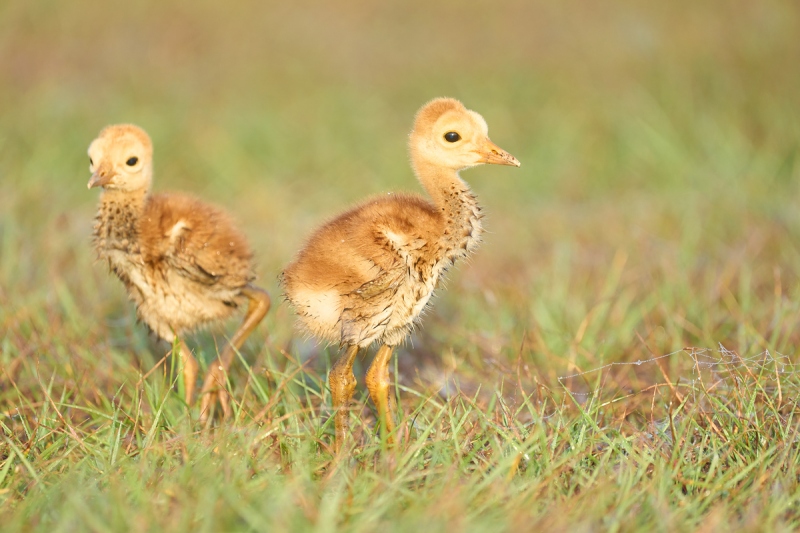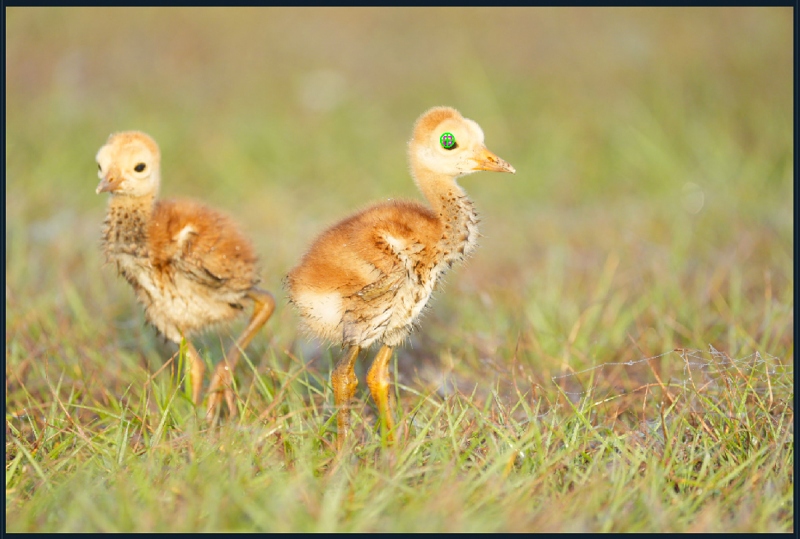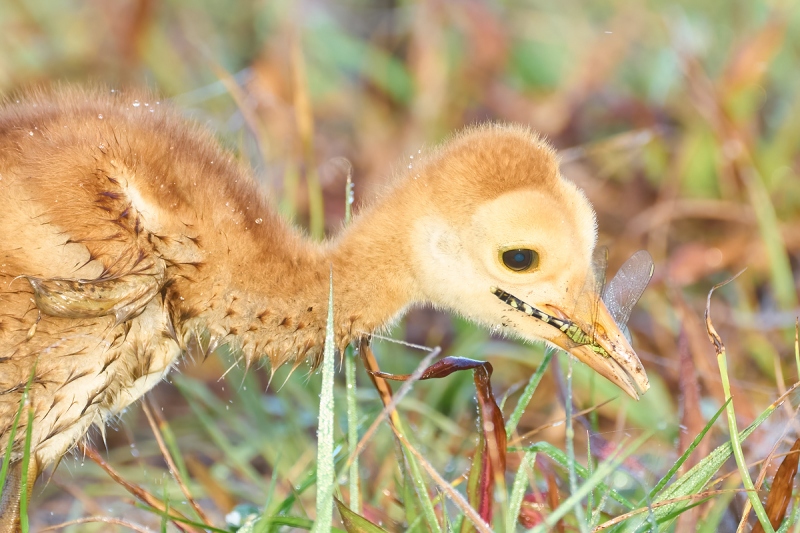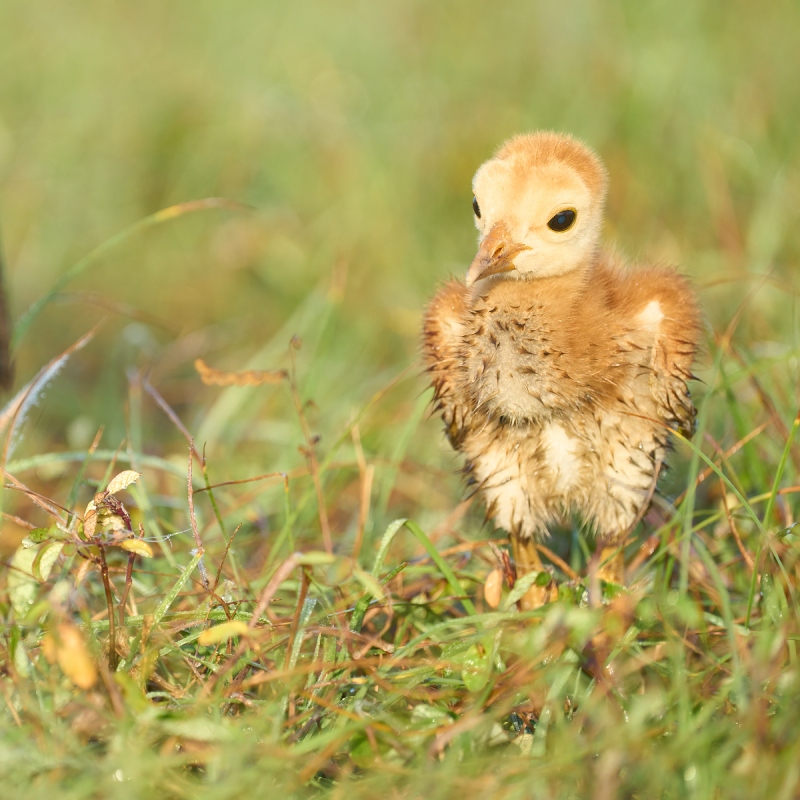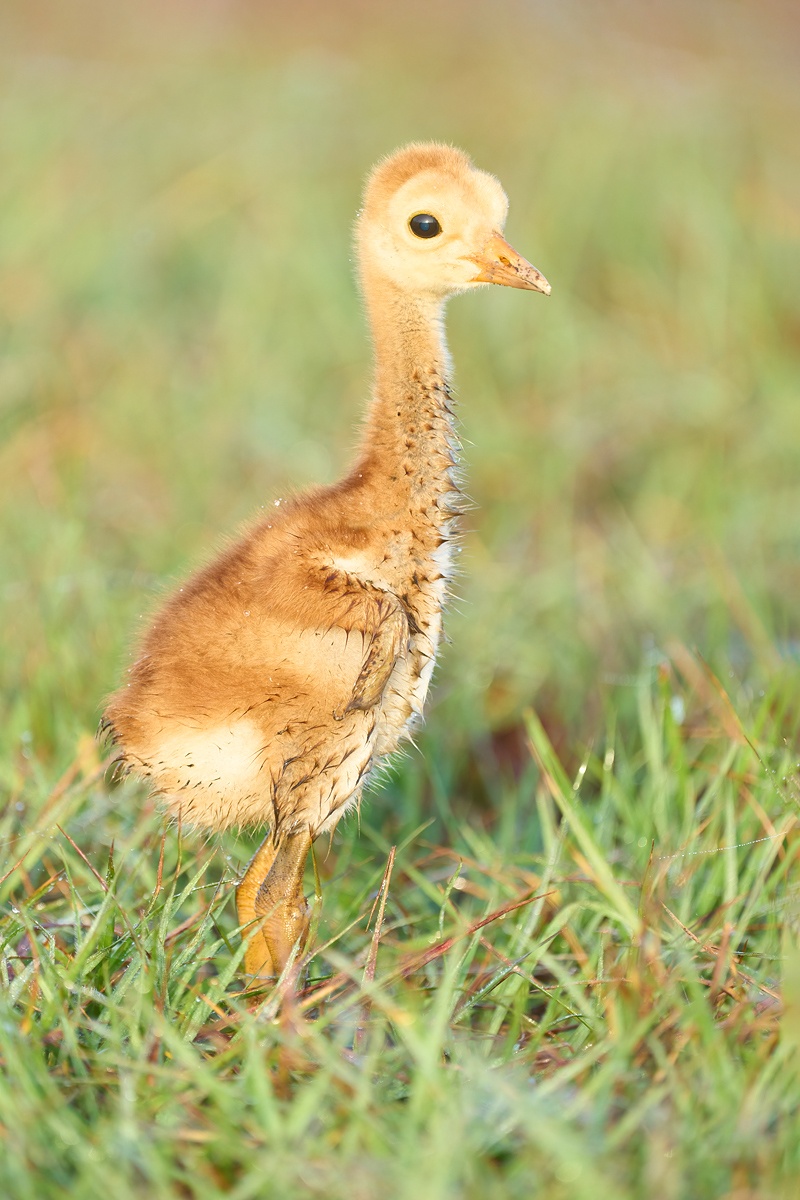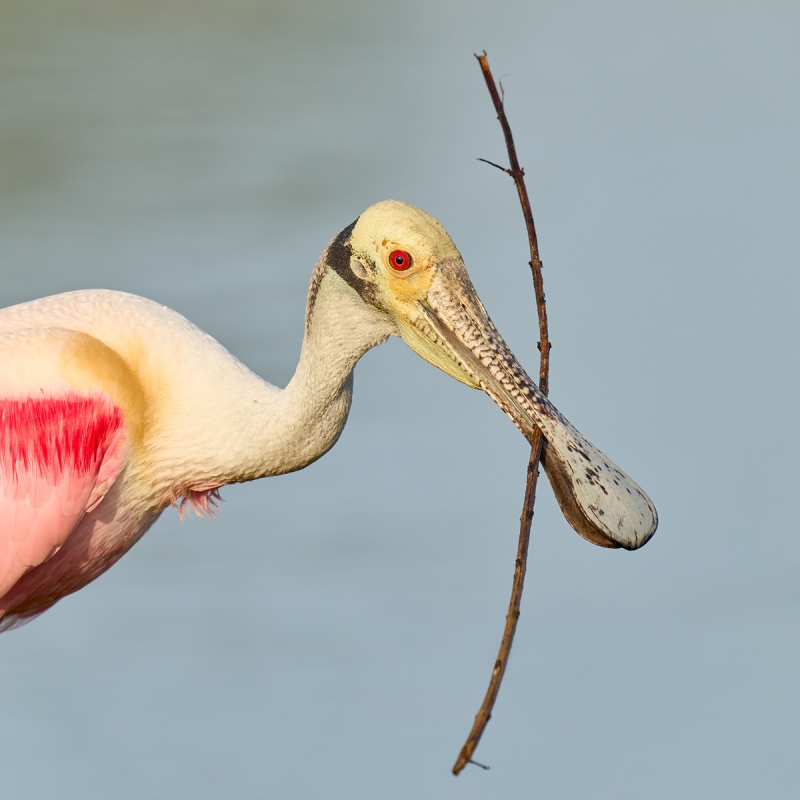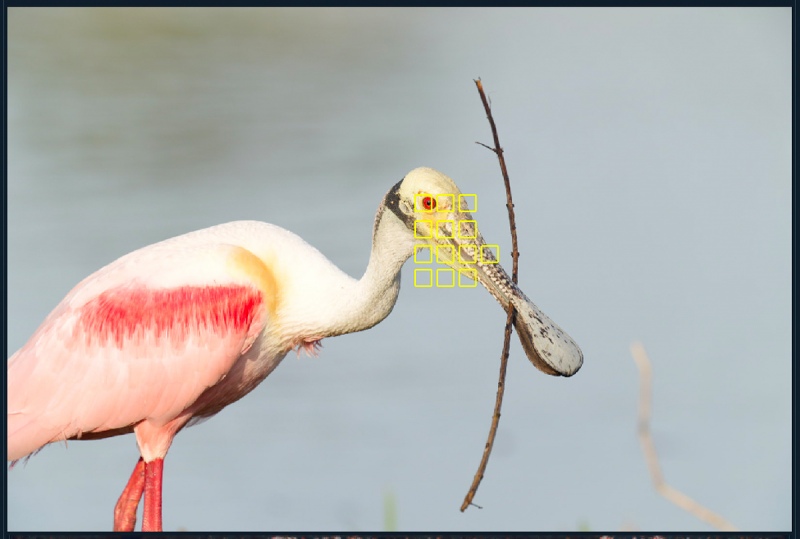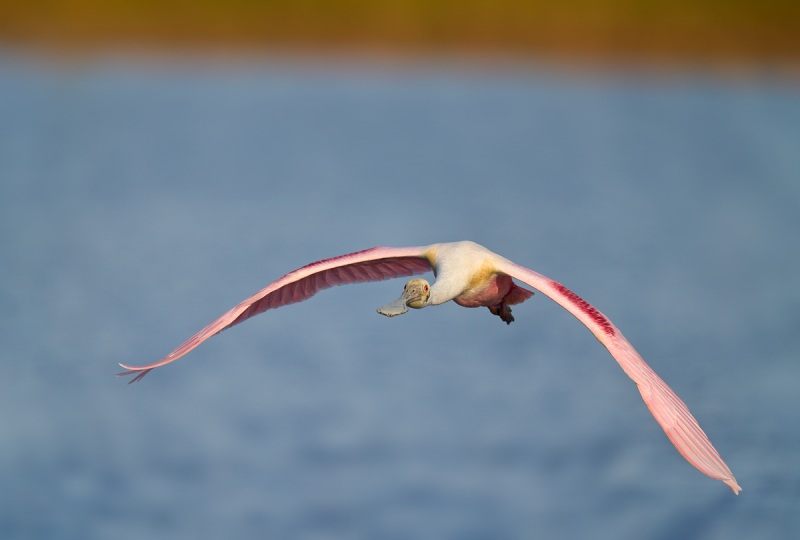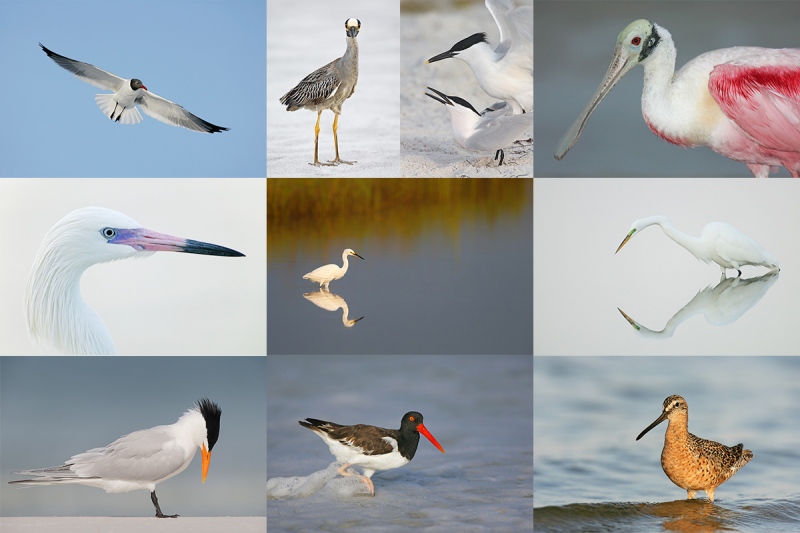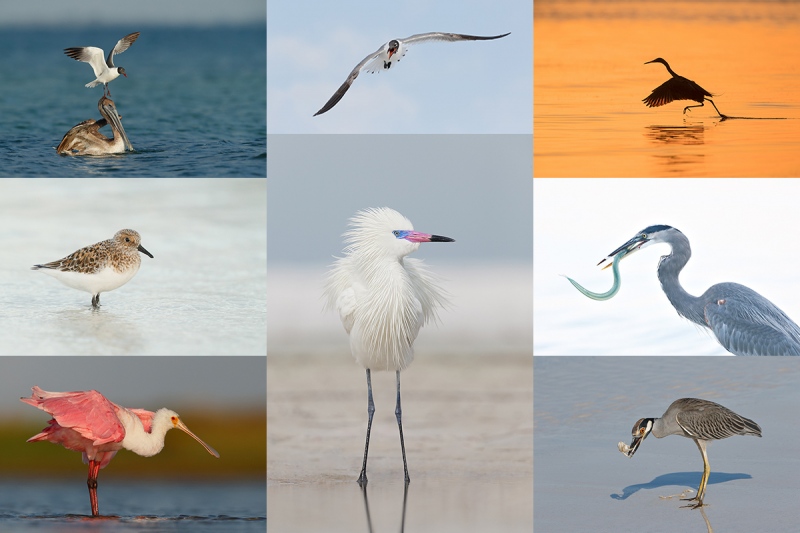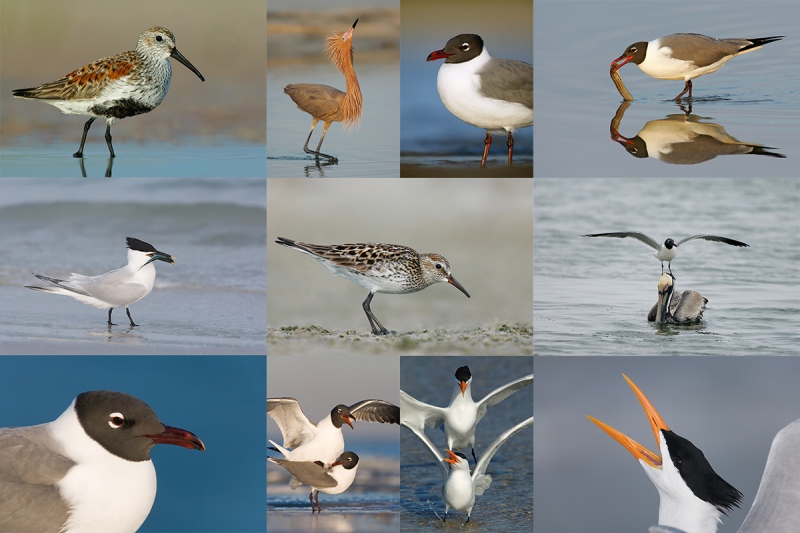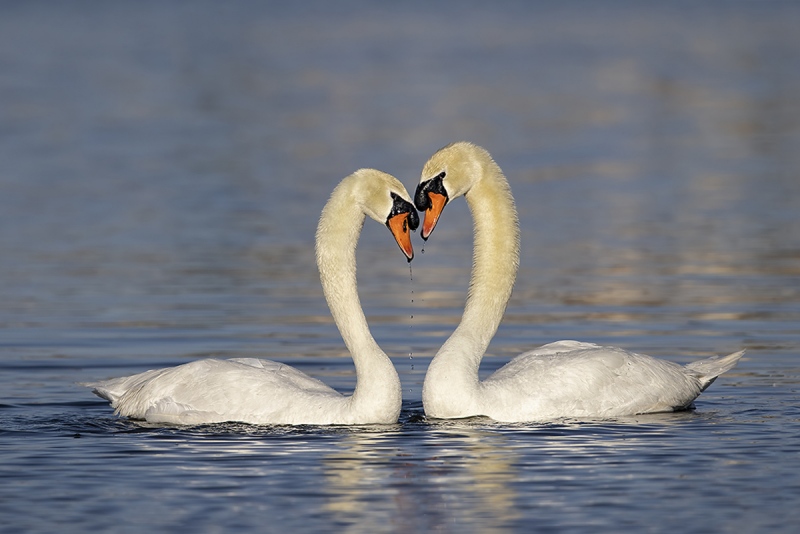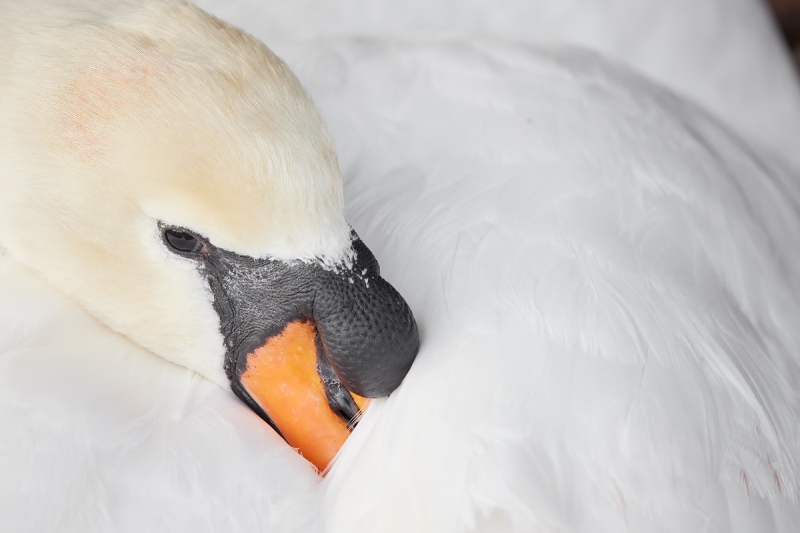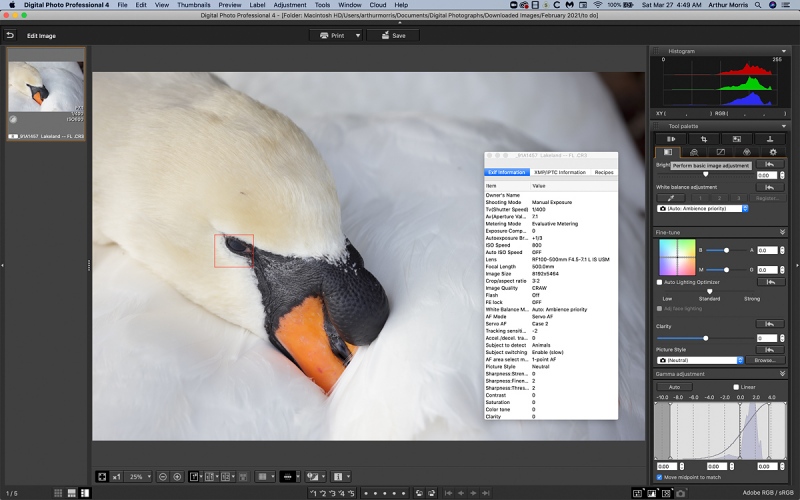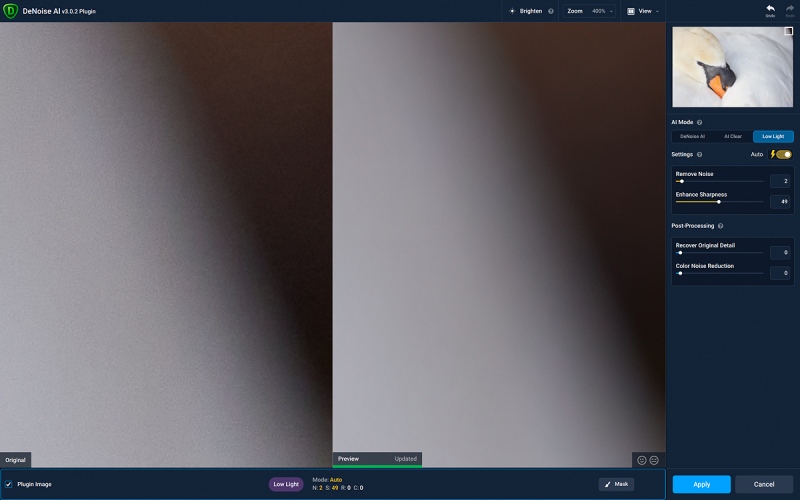Your Favorite?
Which of today’s four featured images do you like best? All are invited to leave a comment to let us know their choice and why they made it. Comments on any or all of the images are of course welcome.
What’s Up?
I headed down to the lake on Sunday morning not expecting much, but I was in for a pleasant surprise …
I am in the process of selecting master file TIFFs from the past year to be re-sized for electronic presentation. That is done in Photoshop by batch-processing with my Slide Show JPEGs action. It has been a long time since I created a new slide program. IAC, I got lots of work done yesterday and will soon begin putting together the Zoom Webinar presentation that I will be doing for the South Shore Camera Club on April 7th. It is entitled Designing and creating pleasing and dramatic natural history images.
Note: you can learn to create time-saving actions for oft-repeated tasks (plus tons more!) in the BIRDS AS ART Current Workflow e-Guide (Digital Basics II).
I will be meeting Ron Santini (another R5 user), at Stick Marsh early on Tuesday morning. We are both looking forward to the session. If you are interested in either a crane chick or a Stick Marsh In-the-Field Instructional session, please get in touch via e-mail ASAP. My April schedule is getting very crowded very quickly.
Today is Monday 29 March 2021. The morning forecast for ILE is for mostly cloudy turning cloudy early with a gentle wind from the north/northwest. I will be headed down to the lake early to check on the new crane family. Wherever you are and whatever you are doing, I hope that you have a great day.
This blog post took almost two hours to prepare and makes ninety-seven consecutive days with a new one. Please remember to use my B&H affiliate links or to save money at Bedfords by using the BIRDSASART discount code at checkout. Doing either often earns you free guides or discounts. And doing so often earns my great appreciation.
|
|
|
This image was created on 28 March 2021 at Indian Lake Estates. I used the hand held Sony FE 200-600mm f/5.6-6.3 G OSS lens (at 600mm) and The One, the Sony Alpha 1 Mirrorless digital camera. ISO 800. Exposure determined with ISO on the Thumb Wheel. 1/640 sec. at f/6.3 (wide open) in Manual mode. AWB at 8:03am just after the fog cleared. Wide/AF-C was active at the moment of exposure and performed perfectly. Click on the image to enjoy a larger version. Image #1: Sandhill Crane chicks — 3 days old |
Planned Posts Postponed One Day for Two Good Reasons
Those two good reasons are the subjects in Image #1. As it was pretty foggy, I headed down to the lake at about 7:45am on Sunday morning. I was not expecting much. As I drove south on the South Peninsula, I saw the heads and necks of two adult cranes on my left down the slope by the canal. I pulled closer to look for the single surviving fairly large colt that I had seen the day before in roughly the same area. Instead, I saw two very small chicks. More euphoria. I pulled the car up and got out, delighted to see that the youngsters did not run away; they were fairly accepting right from the get-go. I grabbed the 200-600, walked slowly down the slope to the edge of the canal, made my way to sun angle, and went to work.
|
|
Image #1A: Sandhill Crane chicks — 3 days old |
SONY a1 Eye and Face Tracking
As you can see by looking at the screen capture above, the SONY a1 Eye and Face Tracking technology is quite impressive. Like the Canon R5’s Face Detection plus Tracking technology, its performance — though not always perfect — is usually amazing.
Sony Alpha a1 AF Magic …
The AF system of the a1 — set up as detailed in e-mails to the Sony Alpha a1 Info & Updates group, continues to amaze me. Early on there was lots of discussion within the group with many preferring multiple back button approaches. For me a simple shutter button approach with the right AF settings that yield 99% sharp on the eye images is best. By far. Super-simple and mega-effective. Note: info on the program that I use to ascertain SONY AF point information is detailed in one of the SONY Alpha a1 Set-up and Info Group e-mails. I plan on making that information available here soon for all SONY camera users.
SONY Alpha a1 Set-up and Info Group
The SONY Alpha a1 Set-up and Info Group is going great guns as folks chime in with thoughtful questions and experience-based advice. We are now up to an amazing 24 folks. Early on (as noted above), we discussed the best AF options. More recently, we have been in contact with folks at SONY sharing our thoughts, experiences, and frustrations with the EVF blackout problem. There will be more on that topic here tomorrow.
All who purchased their Alpha a1 bodies via a BAA affiliate link will receive a free subscription to the Sony Alpha a1 Set-Up and Info Updates after shooting me their receipts via e-mail. This same service may be purchased by anyone with an a1 body via a $150.00 PayPal sent to birdsasart@verizon.net indicating payment for Alpha a1 Info Updates. Alternatively, they can call Jim weekday afternoons at 1-863-692-0906 to pay via credit card. New members will receive composite e-mails that summarize all previous discussions.
|
|
|
This image was created on 28 March 2021 at Indian Lake Estates. I used the hand held Sony FE 200-600mm f/5.6-6.3 G OSS lens (at 400mm) and The One, the Sony Alpha 1 Mirrorless digital camera. ISO 1250. Exposure determined with ISO on the Thumb Wheel. 1/500 sec. at f/5.6 (wide open) in Manual mode. AWB at 7:59am just as the fog was clearing. Wide/AF-C was active at the moment of exposure and performed perfectly. Click on the image to enjoy a larger version. Image #2: Sandhill Crane chick — 3-day old eating dragonfly |
Yummy!
The tiny chicks forage on their own, but whenever one of the adult catches a tidbit — mole crickets are their favorites, they will run over to partake. I was thrilled to see that the prey item here was a small green dragonfly. If you have an idea as to the Anisoptera species, please leave a comment.
Though incredibly sharp as presented, more than 88% of the original pixels were cropped away. Sharp Alpha a1 image files stand up well to even huge crops. In retrospect, zooming to 600mm would have put a lot more pixels on the subject.
|
|
|
This image was created on 28 March 2021 at Indian Lake Estates. I used the hand held Sony FE 200-600mm f/5.6-6.3 G OSS lens (at 600mm) and The One, the Sony Alpha 1 Mirrorless digital camera. ISO 1000. Exposure determined with ISO on the Thumb Wheel. 1/1000 sec. at f/6.3 (wide open) in Manual mode. AWB at 8:11am just after the fog had cleared. Wide/AF-C was active at the moment of exposure and performed perfectly. Click on the image to enjoy a larger version. Image #3: Sandhill Crane chick – 3 day old with “punked” feathers |
The Punked Look and Another Rare Square
I love the spiked, punked look of the body feathers, that the result of coming out of the marsh soaking wet and a bit muddy. With Image #3, the square crop was effective again. It eliminated the bill of the adult on the left side of the frame that was angled completely away from us. It is very rare for me to go to two square crops in a single week.
|
|
|
This image was created on 28 March 2021 at Indian Lake Estates. I used the hand held Sony FE 200-600mm f/5.6-6.3 G OSS lens (at 576mm) and The One, the Sony Alpha 1 Mirrorless digital camera. ISO 1000. Exposure determined with ISO on the Thumb Wheel. 1/640 sec. at f/6.3 (wide open) in Manual mode. AWB at 8:04am just as the fog was clearing. Wide/AF-C was active at the moment of exposure and performed perfectly. Click on the image to view a version that fits in your browser window. Image #4: Sandhill Crane chick — 3-day old/vertical |
The Sony Alpha a1/200-600 GM Rig!
For those able to hand hold the a1/200-600 rig at 6 pounds, 10.2 ounces, it is surely the greatest-ever walk-around bird photography set-up. (Note: the quoted weight above is with the lens hood in place, the lens foot removed, and a flash card in the camera.) The closest runner-up would be the Canon RF 100-500/R5 combo. Both do well on sunny days with the 1.4X TC and even with the 2X TC. And both have fabulous AF systems that are great for photographing birds in flight (provided that your camera body is set up correctly). The smaller, lighter Canon rig may be hand holdable for some folks who might not be able to hand hold SONY 2-6 and the a1. Fortunately, I am able to hand hold the SONY rig effectively for extended shooting sessions.
The 2-6 offers greater reach that yields the subject 44% larger at 600mm as compared to 500mm. Confused? The size of the bird in the frame is a function of the square of the focal length. The 1-5 is smaller and lighter and focuses much closer than the 2-6. The latter is one-third stop faster. Both are incredibly sharp and versatile.
Had I gone to the four-clicks faster 600 GM on a tripod yesterday morning, I would have missed most or all of today’s featured images as I struggled to set up the tripod on the 25 degree slope. Getting in position and on sun angle is a thousand times easier when hand holding.
Typos
With all blog posts, feel free to e-mail or to leave a comment regarding any typos or errors.

